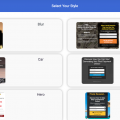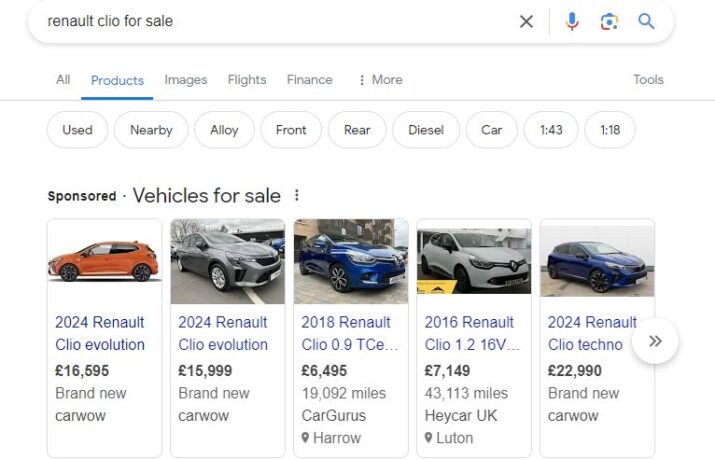Click fraud involves deceptive practices that affect campaign integrity and efficiency of digital marketing campaigns. It presents a significant challenge to online advertisers.
Click fraud occurs when an individual, script, or program maliciously clicks on an online advertisement without any genuine interest in the offer behind the click.
This deceptive practice drains advertising budgets and skews marketing data.
At its core, click fraud is an attempt to simulate the appearance of interest in an advertisement.
This can be done for various reasons. They include draining a competitor’s advertising budget or earning undue revenue from pay-per-click (PPC) agreements.
Unlike legitimate clicks that reflect genuine interest, clicks generated through fraud provide no real value to advertisers.
Types of Click Fraud
Understanding the different mechanisms through which click fraud can be perpetrated is crucial for its detection and prevention. The most common types include:
Bot Clicks: Automated programs, known as bots, mimic human behavior to click on ads. These bots can operate at a massive scale, generating vast amounts of fraudulent traffic.
Competitor Clicks: In some cases, competitors may engage in clicking on ads maliciously to deplete the advertising budgets of their rivals, thereby hampering their ability to compete effectively.
Click Farms: Groups of individuals are hired to manually click on advertisements. These click farms can be found across the globe. They are often used to generate fake clicks at a scale that automated systems can detect.
Bot Clicks
Bot clicks represent one of the most sophisticated and challenging forms of click fraud facing online advertisers today.
These automated programs are designed to mimic human behavior, interacting with digital ads as if they were genuine users.
The sophistication of such bots varies significantly; some operate on a basic level, randomly clicking on ads across the web. Others are highly advanced, capable of mimicking human browsing patterns, completing forms. They can even bypass security measures designed to differentiate between human and non-human traffic.
How Bot Clicks Operate
Bot clicks are generated through automated scripts or software programs. These bots can be distributed across numerous devices and networks. This makEs their traffic appear to originate from different locations and IP addresses.
This distribution helps to mask the fraudulent activity, complicating detection efforts.
Advanced bots further disguise their nature by emulating human interaction times, mouse movements, and even engaging in “random” non-linear browsing behaviors to evade pattern recognition systems.
Scale of Operation
The scale at which bots can operate is a significant part of what makes them such a formidable challenge.
A single botnet, which is a network of infected computers controlled by a hacker, can generate millions of clicks without any direct human involvement.
This capability allows fraudsters to inflict substantial financial damage on targeted advertising campaigns within a very short timeframe.
Impact on Advertisers
The impact of bot clicks on advertisers is multifaceted:
Financial Loss: The most immediate effect is financial. Advertisers pay for clicks, assuming they represent genuine interest. Bot clicks drain budgets without providing any return on investment.
Skewed Analytics: Bots inflate engagement metrics, leading advertisers to make misinformed decisions about the effectiveness of their campaigns. This distortion can misguide marketing strategies, budget allocation, and performance assessment.
Deterioration of Advertiser-Publisher Trust: Over time, unchecked bot traffic can erode the trust between advertisers and publishers. Advertisers may become skeptical of the traffic quality provided by certain platforms, impacting future advertising relationships and negotiations.
Combating Bot Clicks
Efforts to combat bot clicks involve a combination of technology, vigilance, and collaboration:
Advanced Detection Tools: Sophisticated detection tools analyze click patterns, verify IP addresses, and monitor user behavior to help identify and filter out bot traffic.
Machine Learning and AI: Machine learning algorithms and AI can enhance the ability to detect anomalies in traffic that suggest bot activity, continually improving detection accuracy over time.
Industry Collaboration: Sharing information about known bots and attack patterns within the industry can help advertisers and platforms stay one step ahead of fraudsters.
Understanding the nature and operation of bot clicks is essential for advertisers seeking to protect their investments.
Competitor Clicks
Competitor clicks refer to a deliberate and malicious practice where businesses click on their rivals’ online advertisements.
This form of click fraud is driven by the desire to undermine a competitor’s marketing efforts, draining budgets and thus making it more difficult for them to maintain a visible online presence.
As well as financial strain, the behaviour can produce inaccurate data. This can lead advertisers to change their campaigns in ways they otherwise wouldn’t if the information was honest.
Unlike bot-generated clicks, competitor clicks involve direct human action. This can make them challenging to identify due to their seemingly legitimate nature.
This tactic can be particularly appealing in highly competitive industries where advertising costs are high, and market share is fiercely contested.
Strategies for Mitigation
Addressing competitor clicks requires a multifaceted approach that combines vigilance, technological solutions, and potentially legal action:
Monitoring and Analysis: Regularly monitoring ad performance and analyzing traffic sources for irregularities can help identify suspicious patterns indicative of competitor clicks.
Geo-targeting and Ad Scheduling: Limiting ads to specific geographic locations or times can help avoid exposure to competitors, reducing the likelihood of fraudulent clicks.
Legal Recourse: In some jurisdictions, engaging in click fraud can have legal consequences. If competitor clicks can be conclusively traced back to a source, legal action may be a viable option.
Engagement with Ad Platforms: Many advertising platforms have mechanisms in place to identify and refund fraudulent clicks. Maintaining open communication with these platforms can help ensure that you’re not paying for illegitimate traffic.
Understanding the dynamics of competitor clicks is crucial for any business reliant on online advertising. By employing targeted strategies to mitigate their impact, businesses can protect their advertising investments.
Click Farms
Click farms represent a more human-centric approach to generating fraudulent clicks on digital advertisements in comparison to Bot Clicks.
These operations consist of networks of individuals who are paid to manually click on ads, visit websites, and even interact with content to feign genuine user engagement.
Unlike bots click farms use human labor to produce clicks and interactions. This makes it harder for algorithms to distinguish them from legitimate traffic.
As well as the effects associated with bots and competitors, clickfarms can be harmful to an advertiser’s reputation. Platforms and consumers may begin to associate certain brands with low-quality traffic, potentially damaging reputations over time.
Operation and Global Presence
Click farms operate in a relatively straightforward manner: individuals are recruited and organized into groups, often in low-wage countries, to click on specified advertisements or interact with digital content for hours at a time.
These operations can range from small setups with a handful of individuals to large-scale operations employing hundreds or even thousands of people.
The global presence of click farms is widespread.
The decentralized nature of click farms, coupled with the use of VPNs and proxy servers to mask the real geographical location of the clicks, complicates the task of tracing and addressing this form of click fraud.
Challenges in Detection and Prevention
Detecting click farm activity poses a significant challenge due to the human element involved. However, some strategies can be employed to mitigate their impact:
Pattern Recognition: Advanced analytics and machine learning tools can help identify patterns typical of click farms, such as unnatural spikes in traffic or clicks coming from geographical locations not matching the target audience.
Strengthened Ad Network Policies: Ad networks continuously improve their policies and detection mechanisms to identify and penalize advertisers or publishers involved in click farm activities.
Selective Targeting and Engagement: By carefully choosing where and when ads are displayed, and by closely monitoring engagement patterns, advertisers can reduce their exposure to click farms. This might include avoiding advertising in regions known for click farm operations or adjusting bids based on the quality of traffic received.
Mitigating the Risk
To mitigate the risk of click farm fraud, advertisers must remain vigilant, employing a combination of technology and best practices to identify and reduce fake clicks. This includes regularly auditing traffic sources, implementing more stringent targeting criteria, and working closely with ad platforms to report and address suspicious activities.
Importance of Understanding Click Fraud for Businesses and Advertisers
For businesses and advertisers, the ramifications of click fraud extend beyond just wasted financial resources.
It can lead to misguided decisions based on distorted data, misallocation of marketing budgets, and diminished campaign performance.
Understanding click fraud in all its forms and nuances is the first step in developing effective strategies to combat it. This knowledge not only aids in safeguarding advertising investments but also ensures the integrity of marketing campaigns, allowing for genuine engagement with potential customers.
In a time when digital visibility is crucial for market success, safeguarding against fraudulent activities is essential.
Notable Click Fraud Operations
1. Methbot Operation
Overview: Methbot was one of the largest and most sophisticated ad fraud schemes ever uncovered, primarily active around 2015-2016. It was operated by a Russian cybercriminal group and named after its key software, “Methbot.”
Method: The operation used an extensive network of bots, running on over half a million fake web pages that mimicked the sites of legitimate publishers. These bots simulated human behavior to view video ads, generating fraudulent ad views on a massive scale.
Impact: Methbot generated upwards of $3 to $5 million in fraudulent ad revenue per day, according to some estimates. Its sophistication and scale highlighted the vulnerabilities in digital ad ecosystems and the need for advanced detection and prevention strategies.
2. 3ve Operation
Overview: Uncovered in 2018, 3ve was another extensive digital ad fraud operation. It combined three separate campaigns, hence the name 3ve (pronounced “Eve”), and involved over 1 million compromised IP addresses.
Method: This operation used a mix of techniques, including infecting users’ computers with malware to create a botnet for generating fraudulent ad views and clicks, as well as creating fake websites to host ads and utilizing spoofed IP addresses to simulate geographically relevant traffic.
Impact: 3ve affected thousands of advertisers and siphoned off millions of dollars before it was taken down through a coordinated effort by Google, White Ops (now HUMAN Security), and various law enforcement agencies. The operation led to several arrests and highlighted the importance of cross-industry collaboration in combating ad fraud.
3. ZeroAccess Botnet
Overview: ZeroAccess was a prominent botnet that, at its peak, affected millions of computers worldwide. It was primarily used for click fraud and Bitcoin mining.
Method: The botnet infected computers through various vectors, turning them into bots that executed click fraud on a massive scale, alongside other malicious activities. ZeroAccess used sophisticated methods to avoid detection and removal, making it one of the more resilient threats at the time.
Impact: The financial damage caused by ZeroAccess in terms of wasted advertising spend and bandwidth consumption was significant, running into millions of dollars. Efforts by companies like Microsoft and law enforcement led to a partial takedown of the botnet, underscoring the challenges of eradicating such distributed threats.
These case studies exemplify the diversity of click fraud operations, from botnets and malware to sophisticated ad fraud schemes.
Detecting Click Fraud
Detecting click fraud is a critical component of digital advertising security, ensuring that budgets are spent efficiently and that campaign data reflects genuine user engagement.
Identifying fraudulent activity requires a combination of vigilant monitoring, sophisticated tools, and an understanding of traffic and click pattern irregularities.
Indicators of Click Fraud
Several key indicators can signal the presence of click fraud in digital advertising campaigns:
Abnormally High Click-Through Rates (CTR): While a high CTR is generally positive, an unexpected or unexplained surge can be indicative of fraudulent activity.
Short Duration Visits: If analytics show a significant portion of clicks result in very brief site visits, often seconds, this may suggest non-genuine interaction.
High Bounce Rates: Similar to short-duration visits, a high bounce rate with a correspondingly high CTR might indicate fraudulent clicks.
Geographic Inconsistencies: Receiving clicks from regions not targeted by your campaign or from locations known for click farms can be suspicious.
Irregular Times of Activity: A sudden influx of clicks during off-peak hours, especially in patterns not consistent with your typical traffic, could suggest fraud.
Tools and Technologies for Detection
A variety of tools and technologies are available to help detect and mitigate click fraud:
Automated Detection Software: Many platforms offer built-in fraud detection features. Additionally, third-party software can provide an extra layer of protection by analyzing traffic and identifying potential fraud.
AI and Machine Learning: Advanced solutions utilize artificial intelligence and machine learning algorithms to recognize patterns and behaviors indicative of click fraud. These systems can adapt over time, improving their detection capabilities.
Traffic Analysis Tools: Tools that offer deep insights into traffic sources, behavior patterns, and engagement metrics can help advertisers identify inconsistencies that may signal fraud.
Analyzing Traffic and Click Patterns for Irregularities
Effective detection of click fraud involves a detailed analysis of traffic and click patterns, looking for anomalies and irregularities:
Benchmarking Normal Traffic Patterns: Establishing a baseline for normal traffic and engagement patterns allows for easier identification of anomalies. This includes understanding typical user behavior, average session durations, and normal CTRs for your campaigns.
Segmentation Analysis: Breaking down traffic by variables such as device type, geographic location, and time of day can help isolate suspicious activity. For example, an excessive number of clicks from a single device type or location might indicate fraud.
Looking for Patterns in IP Addresses: Repeated clicks from the same IP addresses, especially in short successions, can be a strong indicator of fraudulent activity. IP analysis can also reveal the use of VPNs and proxies commonly used by click farms and bots.
Impact of Click Fraud
The impact of click fraud extends beyond immediate financial losses, affecting the broader integrity of online advertising ecosystems, skewing campaign data, and influencing marketing strategies. Understanding the multifaceted consequences of click fraud is essential for businesses seeking to navigate the digital advertising landscape effectively.
Long-term Consequences for Online Advertising Ecosystems
The pervasive issue of click fraud poses significant threats to the sustainability and trustworthiness of online advertising ecosystems:
Decreased Advertiser Confidence: As advertisers become more aware of the prevalence of click fraud, their confidence in digital advertising platforms may wane. This decreased trust can lead to reduced advertising spend and a search for alternative marketing channels.
Inflation of Advertising Costs: To compensate for losses due to fraud, platforms may increase the cost of advertising, further straining advertiser budgets and exacerbating the challenge of achieving a positive return on investment.
Innovation and Regulation: While the challenge of click fraud spurs innovation in detection and prevention technologies, it also calls for more stringent regulations and standards within the industry. This evolving landscape can both offer new opportunities and impose additional burdens on advertisers and platforms alike.
Preventing Click Fraud
Preventing click fraud is essential for maintaining the integrity of digital advertising efforts and ensuring that marketing budgets are spent effectively.
Through a combination of best practices, proactive fraud detection measures, and strategic platform selection, advertisers can significantly reduce their exposure to fraudulent activities.
Best Practices for Advertisers and Marketers
Educate Your Team: Awareness is the first step in prevention. Ensure your marketing team understands what click fraud is, how it can impact your campaigns, and the common signs of fraudulent activity.
Use Anti-Fraud Technologies: Invest in reputable anti-fraud technologies and services that specialize in detecting and mitigating click fraud. These tools can provide an additional layer of protection by analyzing traffic in real-time and flagging suspicious activities.
Implement Strict Targeting: Narrow your ad campaigns’ targeting to focus on demographics and geographies that are most relevant to your business. This approach not only improves campaign effectiveness but also reduces the likelihood of attracting fraudulent clicks.
Setting Up Fraud Detection Measures
Enable Click Fraud Monitoring: Many ad platforms offer monitoring tools that can be enabled to track the behavior of clicks and detect patterns indicative of fraud.
Analyze Traffic Regularly: Conduct regular analyses of your traffic data for abnormalities such as spikes in traffic from specific regions or devices, short session durations, and unusually high bounce rates.
Use CAPTCHAs and IP Blocking: Implement CAPTCHAs for interactive elements of your campaigns to deter bots, and use IP blocking to exclude traffic from known fraudulent sources.
Choosing the Right Platforms and Ad Networks
Research and Select Trusted Platforms: Opt for advertising platforms and networks with robust anti-fraud measures and positive reputations for managing click fraud. Platforms that are transparent about their efforts to combat fraud are generally more reliable.
Demand Transparency: Work with platforms that provide detailed reporting and analytics tools, allowing you to see where your ads are being placed and how they are performing.
How Do I Get Rid of Click Fraud?
Immediate Steps to Take When You Detect Click Fraud
Pause Your Campaigns: Temporarily pausing affected campaigns can prevent further loss until the source of fraud is identified and addressed.
Report to Ad Platforms: Immediately report the suspected fraud to your ad platform. Provide them with detailed evidence of the suspicious activity to support your claim.
Working with Ad Platforms for Refunds and Blocking Fraudulent Sources
Request Refunds: Many ad platforms have procedures in place for investigating click fraud claims and issuing refunds for fraudulent clicks. Be prepared to provide detailed data to support your refund request.
Collaborate on Prevention: Work closely with ad platforms to identify and block fraudulent sources. This collaboration can lead to the development of customized solutions to protect your specific campaigns.
Continuous Monitoring and Adjustment Strategies
Regularly Review Campaign Performance: Continuously monitor your campaign performance for signs of click fraud. Adjust your strategies based on insights gathered from your ongoing analysis.
Stay Updated on Trends: Click fraud tactics evolve, so staying informed about the latest trends in fraud and prevention measures is crucial. Regularly updating your knowledge and tools can provide ongoing protection for your campaigns.
Preventing click fraud requires a proactive, informed approach. By implementing these best practices and remaining vigilant against new threats, advertisers can better protect their investments and ensure the integrity of their online marketing efforts.
Legal and Ethical Considerations
The issue of click fraud brings to the forefront significant legal and ethical considerations within the digital advertising industry. Understanding the legal landscape, ethical implications, and available recourse can empower businesses to navigate these challenges more effectively.
Is Click Fraud Legal?
Click fraud is considered illegal under various laws that prohibit fraudulent activities and cybercrime. However, the specific legal classification and penalties associated with click fraud can vary significantly by jurisdiction.
At its core, click fraud involves deception and financial harm, aspects that are generally actionable under laws related to fraud, computer misuse, and unfair competition.
Overview of Laws and Regulations Against Click Fraud
Computer Fraud and Abuse Act (CFAA) in the U.S.: This federal statute is one tool used to combat click fraud, addressing unauthorized access or use of computer systems, which can include the deployment of bots for fraudulent clicking.
Wire Fraud Statutes: In many jurisdictions, click fraud can be prosecuted under general wire fraud statutes, given that it involves the use of telecommunications or the internet to carry out fraudulent schemes.
Consumer Protection Laws: Laws aimed at protecting consumers from deceptive practices may also be applied to click fraud, particularly when false advertising or misrepresentation is involved.
The complexity of digital advertising ecosystems and the transnational nature of the internet can complicate legal actions against click fraud, highlighting the need for international cooperation and specific cybercrime legislation.
Ethical Considerations in Digital Advertising
Beyond legality, click fraud raises ethical concerns that can undermine trust in digital ecosystems:
Transparency: Advertisers and platforms have a duty to ensure transparency in how clicks are generated and accounted for. Concealing or ignoring fraudulent activities can erode trust among all stakeholders.
Fair Competition: Click fraud distorts competition by unfairly depleting competitors’ advertising budgets, violating principles of fair play.
Consumer Trust: Engaging in or tolerating click fraud can diminish consumer trust in digital advertisements, affecting the credibility of online marketing channels.
Adhering to ethical standards is crucial for maintaining the integrity and sustainability of digital advertising.
Future of Click Fraud
As digital advertising continues to evolve, so do the methods and tactics of click fraud.
Understanding emerging trends, the role of advanced technologies in combating this fraud, and making informed predictions about the future of online advertising are crucial for staying ahead in this ongoing battle.
Emerging Trends and Technologies
The landscape of click fraud is constantly shifting, with fraudsters regularly adopting new technologies to carry out their schemes. Some emerging trends include:
Sophisticated Botnets: As bot detection techniques become more advanced, so too do the botnets. These networks are increasingly mimicking human behavior more accurately, making them harder to detect.
Machine Learning for Fraud Creation: Just as defenders use machine learning to detect fraud, attackers are beginning to use these technologies to learn and adapt to new detection methods, creating a cat-and-mouse dynamic.
Cross-Platform Fraud: Fraudulent activities are spreading across platforms, from traditional web-based advertising to mobile apps and social media platforms, exploiting the integrated nature of digital ecosystems.
The Role of AI and Machine Learning in Combating Click Fraud
Artificial Intelligence (AI) and Machine Learning (ML) are at the forefront of the fight against click fraud, offering powerful tools to identify and mitigate fraudulent activities:
Pattern Recognition: AI/ML algorithms excel at detecting patterns and anomalies in data, including subtle signs of fraud that might elude human analysts.
Predictive Analytics: These technologies can predict potential fraudulent activities by analyzing historical data and identifying risk factors associated with click fraud.
Real-Time Monitoring and Response: AI systems can monitor campaign data in real-time, providing immediate responses to suspected fraud, thereby minimizing potential losses.
Predictions for the Online Advertising Industry
The future of click fraud and its impact on the online advertising industry hinge on several factors, including technological advancements, regulatory changes, and shifts in advertiser strategies:
Increased Investment in Fraud Detection: Businesses are likely to allocate more resources toward advanced fraud detection solutions as the cost of click fraud becomes increasingly untenable.
Greater Collaboration Among Stakeholders: There may be an uptick in collaboration between advertisers, platforms, and regulatory bodies to establish industry-wide standards and share intelligence on fraudulent activities.
Regulatory and Legal Evolution: New laws and regulations specifically addressing online fraud and digital advertising practices are expected to emerge, providing clearer frameworks for combatting click fraud.
Shift Toward Quality Over Quantity: Advertisers might prioritize metrics that reflect genuine user engagement and conversion over sheer volume of clicks, adjusting their strategies to focus on quality traffic.
As the digital advertising ecosystem becomes more complex, the battle against click fraud will continue to require vigilance, innovation, and cooperation among all stakeholders.
The ongoing development of AI and ML technologies represents a opportunity, promising more effective tools for detecting and preventing click fraud.
However, the adaptability of fraudsters means that strategies must continually evolve.
The future of online advertising will likely be characterized by a heightened emphasis on security, transparency, and sustainable engagement practices, ensuring that investments in digital ads yield genuine value.
Click Fraud Protection Software and Service Companies
In the evolving battle against click fraud, a variety of companies have emerged, each offering unique solutions designed to protect advertisers and ensure the integrity of digital advertising.
ClearTrust https://cleartrust.cc/ offers tailored protection mechanisms focusing on transparency and trust in ad transactions.
Lunio https://lunio.ai/ leverages AI to provide advertisers with insights and tools for combating fraudulent traffic in real-time.
CHEQ https://essentials.cheq.ai/ introduces a comprehensive suite for digital security, including click fraud prevention, with an emphasis on real-time protection.
Fraud0 https://www.fraud0.com/ specializes in detecting and preventing ad fraud using advanced analytics and real-time monitoring, targeting a wide range of online fraud types.
Singular https://www.singular.net/ stands out with its marketing analytics platform that integrates fraud prevention, aiming to optimize advertising spend and enhance ROI.
TrafficGuard https://www.trafficguard.ai/ proactively blocks fraudulent traffic, safeguarding advertising budgets with precision and granularity.
IPQualityScore https://www.ipqualityscore.com/ offers a robust suite of tools for fraud prevention, focusing on IP address and device reputation to block unwanted interactions.
FraudBlocker https://fraudblocker.com/ emphasizes an easy-to-use, efficient solution for detecting and blocking click fraud, enhancing campaign performance.
SpiderAF https://spideraf.com/ is dedicated to fighting ad fraud with its automated detection software, catering specifically to the needs of digital agencies and app developers.
OpticksSecurity https://optickssecurity.com/ tackles ad fraud through a security-first approach, using sophisticated signal analysis to identify threats.
ClickGuard https://www.clickguard.com/ provides customizable protection against click fraud, offering granular control over traffic filtering and ad spend optimization.
Clixtell https://www.clixtell.com/ focuses on detecting and preventing click fraud and conversion fraud, offering tools for enhanced campaign transparency and security.
HUMAN Security (formerly White Ops) https://www.humansecurity.com/ combats sophisticated bot attacks and digital fraud with a human verification engine, ensuring genuine user interactions across digital advertising.
AdsDefender https://www.adsdefender.com/ offers comprehensive click fraud protection with a focus on real-time detection and automated blocking, aiming to maximize the efficiency of digital ad spending.
The post The Ultimate Guide to Click Fraud first appeared on PPC Hero.
























